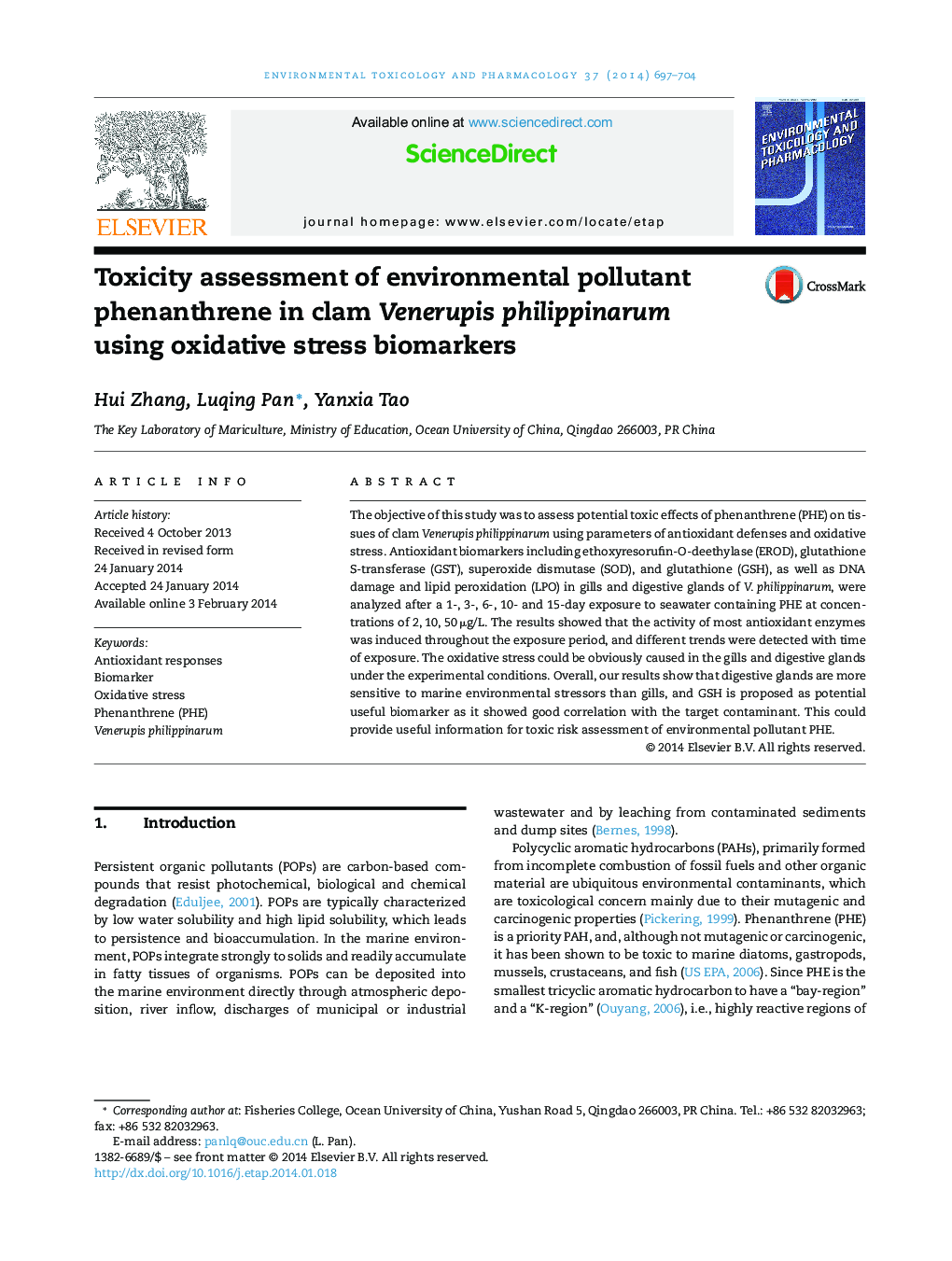| Article ID | Journal | Published Year | Pages | File Type |
|---|---|---|---|---|
| 2583010 | Environmental Toxicology and Pharmacology | 2014 | 8 Pages |
•Antioxidant biomarkers including EROD, GST, SOD, GSH, LPO, DNA damage were used.•The response of two tissues of gill and digestive gland in clam was compared.•Significant imbalances of oxidative status were induced by environmental pollutant PHE.•Oxidative stress caused remarkable adverse effects to cellular macromolecules.•The antioxidant parameters were used to determine potential toxic effects of PHE.
The objective of this study was to assess potential toxic effects of phenanthrene (PHE) on tissues of clam Venerupis philippinarum using parameters of antioxidant defenses and oxidative stress. Antioxidant biomarkers including ethoxyresorufin-O-deethylase (EROD), glutathione S-transferase (GST), superoxide dismutase (SOD), and glutathione (GSH), as well as DNA damage and lipid peroxidation (LPO) in gills and digestive glands of V. philippinarum, were analyzed after a 1-, 3-, 6-, 10- and 15-day exposure to seawater containing PHE at concentrations of 2, 10, 50 μg/L. The results showed that the activity of most antioxidant enzymes was induced throughout the exposure period, and different trends were detected with time of exposure. The oxidative stress could be obviously caused in the gills and digestive glands under the experimental conditions. Overall, our results show that digestive glands are more sensitive to marine environmental stressors than gills, and GSH is proposed as potential useful biomarker as it showed good correlation with the target contaminant. This could provide useful information for toxic risk assessment of environmental pollutant PHE.
